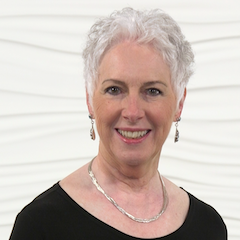Beyond the Therapy Room: Are SLPs Making a Difference?
Take charge of your impact as a school-based SLP. Explore strategies and tools that help you move beyond isolated therapy sessions and create meaningful, lasting change across school, home, and life.
March 21, 2022
4 min. read

Most who enter the field of speech-language pathology do so not only to improve students speech and language skills but, more importantly, to improve the quality of life for individuals with speech-language impairments and expand their ability to take advantage of opportunities available to them.
Our goal is to impact their experiences in a meaningful way that also extends into the future. To ensure that we are meeting that goal, we must pause from time to time and ask ourselves, Am I really impacting my students' lives in a meaningful way? Or have the demands of my job limited my vision and the scope of my work?
What Are the Goals of Therapy?
According to the Individuals with Disabilities Education Act (IDEA), the purpose of special education services is to enable the student to be involved in and make progress in the general education curriculum, and to participate in extracurricular and other non-academic activities.1 Services are provided when a comprehensive evaluation confirms that the child has a disability that adversely affects academic achievement and functional performance.
The goal of special education is for children to succeed in school, graduate, pursue an advanced education if they choose, and secure future employment. Unfortunately, the complexities and demands of the schools have too often created a barrier between the therapy room, other school settings, and the child's home, resulting in speech-language services that focus on discrete skills achieved within the intervention setting rather than performance in the classroom and beyond. We lose sight of the larger purpose of our services.
Barriers to Progress
The stress of large caseloads and heavy workloads can push us to the point where our focus is limited only to student outputs. We check off the number of correct responses in a therapy activity and then move on to the next group session or meeting or pile of paperwork. However, when we measure progress toward goals solely based on output measures, we lose sight of whether an intervention is educationally relevant.
This means of evaluation fails to take into account whether parents and teachers are seeing changes in the child's performance both at home and in the classroom. In short, we miss the chance to demonstrate that speech-language intervention has made a difference in the overall functioning of the child, and we also lose the opportunity to adjust intervention when progress is not occurring beyond the therapy room.
The Use of Logic Models
A helpful tool for keeping our focus on the big picture is a logic model. This approach is commonly used by performance evaluators to help associations and organizations assess the impact of their programs.
While logic models vary in terms of details, a basic one looks something like this:
| Input | Activity | Output | Outcome | Impact |
|---|
When applying it to school-based speech-language services, each category could be defined this way:
| Input | Activity | Output | Outcome | Impact |
|---|---|---|---|---|
| SLP, IEP, materials | # of sessions completed, amount of time, and activities completed during each session | # and % of correct responses on targeted objective | Measurable progress on annual IEP goal | Improved performance in classroom, non-academic/extracurricular settings, and home |
Think in Big Picture Terms
How can we shift our focus from outputs to outcomes and impacts? How can we connect with the classroom, other school settings, and home?
These three Medbridge courses offer strategies for operating within the Big Picture rather than getting lost in the details and losing our focus on impact.
Educationally Relevant Speech-Language Services in Schools: This comprehensive course covers helpful citations from IDEA, focused IEPs, a range of service delivery models, an introduction to a workload approach, and a tool for pulling all of this together. This course is geared toward educationally relevant outcomes and impacts; in other words, helping the student succeed in school and at home.
Balancing & Scheduling Speech-Language Workloads in Schools: The information in this course helps you take control of your workload and schedule so you can rise above the heavy workload and effectively incorporate elements that help you and your students connect therapy work with school and home. This course shows you how to close the gap between what you do and what you would like to do with and on behalf of students, with examples for planning and scheduling.
Effective Collaboration for School-Based Speech-Language Pathologists: This course provides proven strategies for connecting with classroom teachers so your goals and activities are linked to the demands of the child's classroom and ensure that your work is indeed educationally relevant.
These three courses work together to build an approach to school-based services that includes both the framework and the practical tools for intervention that make a difference for your students in school, at home, and in the future. You can make a difference.
Below, watch Kathleen Whitmire discuss the incorporation of specially designed instruction into IEP development in this short clip from her Medbridge course, "Educationally Relevant Speech-Language Services in Schools."






